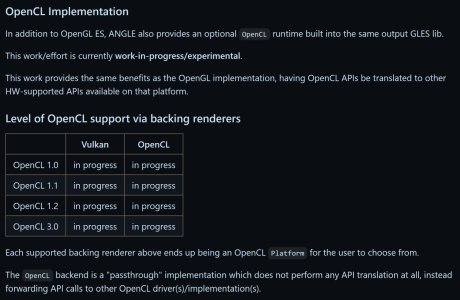The thread title says it all.
Check out mesamatrix.net to see the latest updates on Mesa drivers.
Check out mesamatrix.net to see the latest updates on Mesa drivers.
Last edited:
Starting with the upcoming Android release, i.e. Android 16, though, Google says that “more devices will use Vulkan to process all graphics commands.” Specifically, Android 16 will require some newer devices to use ANGLE for some applications (meaning, only applications on an approved list will use ANGLE). Next year’s Android 17 release, however, will require new devices to use ANGLE for most applications (essentially, switching from an allowlist, meaning only certain apps utilize ANGLE, to a denylist, meaning all apps utilize ANGLE except for those on a specific list.) By “new devices,” Google is referring to devices that ship with chipsets built for the new Android release, as devices upgrading to the new release won’t be forced to meet these new ANGLE requirements in accordance with the Google Requirements Freeze program.
Google also worked with the Khronos Group—the industry group behind the Vulkan graphics API—to develop the latest Vulkan 1.4 release, ensuring that Android devices will broadly support its featureset. The Vulkan 1.4 specification was developed to largely be a subset of the VPA for Android 16, meaning that new devices that meet the VPA16 requirements will support most features in Vulkan 1.4. New SoCs launching with support for Android 17, though, will be required to fully support Vulkan 1.4.
By mandating support for newer versions of Vulkan, Google is essentially culling older GPUs from the market, as devices with those older GPUs won’t be allowed to update to newer Android versions. This is important because it means that robust Vulkan API support will only get better and better among Android devices as time goes on, eliminating a huge reason why mobile game developers don’t take advantage of the latest graphical features available on Android devices.
The problem with Google's pretty little pronouncement is that it's several years too late.I assume the OP is aware of this, but here's a heads-up for anyone who might not know: Google announced in March that Vulkan is now the official graphics API for Android.



